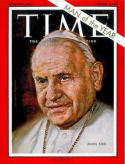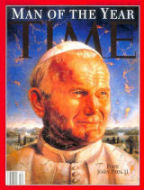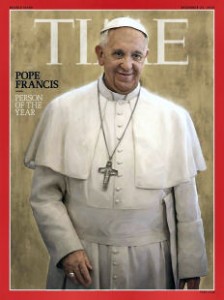Who will emerge from the next conclave? Continue reading →
In a short while pope #266 will be chosen. Who will it be? I have no idea, but I do know a few things about the way that he will be chosen.
The group that chooses the pope is known as the “Sacred College of Cardinals.” At one time the cardinals served as the link between the pope, who is the Bishop of Rome, and the suburbicarian dioceses of the surrounding countryside. In those days there were only a handful of cardinals, and their primary job was to meet with the pope and then return to the hinterlands to explain his policies to the people there. After the Roman Empire virtually abandoned Italy in the fourth century, the pope was forced to take on many civil responsibilities. From 800 through 1870 the pope was universally recognized as the monarch of a strip of central Italy that stretched from coast to coast. The number of cardinals increased, but they still served as advisers and legates.
There is, in fact, no limit on the number of cardinals, and there are no guidelines (that I know of) for the qualifications. All (or at least nearly all) of the current cardinals are bishops. That is a relatively recent development. In the nineteenth century, for example, Cardinal Giacomo Antonelli served as Secretary of State for Pope Pius IX, and he never even became a priest. One cardinal, a Portuguese prince, was only seven-years old when he received his red hat. He probably had to grow into it.
Nowadays, “cardinal” is considered a rank that allows the recipient to wear a variety of red garments and to vote for the pope. When a cardinal reaches the age of eighty, however, although he is still allowed to wear red, he can no longer vote for the pope. So, Pope Benedict will have absolutely no say in choosing his successor.
Well, I should probably amend that last statement to say that he will have no direct say in choosing his successor. Of the 117 electors, 67 were appointed by Pope Benedict. All of the others were appointed by his predecessor, Pope John Paul II. Since these two popes had remarkably similar ideas on how the Church should be managed, it seems inevitable that the next pope will not favor radically different notions.
The cardinals have been choosing the pope for about half of the history of the Church. That policy was implemented in 1059 by Pope Nicholas II. Perhaps the most surprising fact about the history of the papacy is that prior to 1059 there was no established method for selecting the pontiff! Some popes were elected by the Roman citizens, some were elected by the clergy, some were appointed by kings or emperors, and there is no record at all as to how quite a few assumed the office. It was not uncommon for more than one man to claim the papacy, and the matter was occasionally settled violently.
For centuries the papal election took place in whatever city the pope had perished. The electors now always meet in the Sistine Chapel in the Vatican to choose the new pontiff. This process is called a conclave, which means “with a key.” The cardinals and a few attendants (Pope Pius XII’s attendants were nuns!) are locked in until they come to agreement. In the past this process has sometimes taken years! The longest one was held in Viterbo, starting in 1268. In 1271 the cardinals finally chose a man (not a priest) who at the time was taking part in the ill-fated Seventh Crusade, but not until after the impatient residents of Viterbo had hired carpenters to remove the roof of the room in which the cardinals had been locked.
All who participate in the conclave are sworn to secrecy. There is no official record of any of the votes or of the process by which the decisions are made. The official explanation is that the electors make themselves open to the Holy Ghost, and the third person of the Trinity inspires them to choose the best man. Some information, however, inevitably leaks out from one source or another. A Jesuit priest named Malachi Martin was a Vatican insider for several twentieth-century conclaves. He claimed that Cardinal Siri was elected pope at two different conclaves. Circumstances allegedly forced him to turn down the office on both occasions.
The essential requirements for being pope are remarkably simple. Each papabile must be a male Catholic, but not necessarily a priest. Many popes were not ordained as priests until after they were elected, and one, Adrian V, never did become one. Incidentally, this certainly qualifies as one of the most inexplicable piece of papal trivia. The pope is, by definition, the Bishop of Rome. Every bishop must be a priest. Therefore, most people would conclude that every pope had been a priest. The lesson to take home is that when it comes to the papacy there is an exception to almost every rule, even the tautologies.
There is no age requirement for the papacy. Pope John XII was a teenager when he was elected in the tenth century. His father made the arrangements (by paying off Roman nobility) for his ascendancy on his deathbed. Pope Benedict IX was also very young at his coronation (yes, the Pope until recently wore a crown called the “tiara”). One monk reported that this Benedict was only ten-years old, but historians today think that he was at least twice that.
I don’t expect the current College of Cardinals to choose another teenager. John XII was evidently murdered by a jealous husband who found him in bed with his wife. Benedict IX, who was accused of equally deplorable shenanigans, was driven from the papacy, regained it, and then sold the office to his godfather so that he could get married. After being jilted by his intended spouse, he eventually regained the throne once more, but he was finally overthrown in a second coup in 1048.
I guarantee that the new pope will not be a woman. The legend of Pope Joan is not taken seriously by any historians.
I doubt that the pope will be married, but it is possible. According to the Bible St. Peter, the first pope, had a wife. Not only was Pope Adrian II (867-872) married, but he lived with his wife after he became pope! A few other popes may have also been married. Many popes fathered children before they assumed the office. Pope Alexander VI had at least eight offspring whom he recognized, and he continued his promiscuous lifestyle as pope, although he traded in his long-time mistress for a newer model. His predecessor, Pope Innocent VIII, may have had twice that many kids. Life was different in fifteenth-century Rome.
The new pope will choose his own name. This tradition was started by the above-mentioned John XII, whose real name was Octavian. Prior to that time popes continued to use their given names. We will get some indication as to the pope’s intentions by his choice. If he chooses Pius, Gregory, or Paul, you can expect him to continue the conservative bent of the last few decades. If he chooses some other name, he may be making some other kind of statement. Benedict XVI, for example, chose his name as a tribute to the two previous Benedicts, who were intellectuals, Benedict XV during World War I and Benedict XIV in the eighteenth century.
No one has ever chosen the name Peter. That would be a striking statement that the new pontiff intended to return the Church to its roots. Don’t hold your breath.
 Two popes had previously been named Time magazine’s Man of the Year. John XXIII was chosen for 1962, the year that he opened the Second Vatican Council and charged it with bringing the Church into the twentieth century, or at least the Age of Enlightenment. It was a dramatic decision. The Church had not convened an ecumenical council in a century, and that last one was called to rubber stamp decisions made by Pope Pius IX. In contrast, John XXIII had set in place a mechanism for listening to new ideas and implementing the best of them.
Two popes had previously been named Time magazine’s Man of the Year. John XXIII was chosen for 1962, the year that he opened the Second Vatican Council and charged it with bringing the Church into the twentieth century, or at least the Age of Enlightenment. It was a dramatic decision. The Church had not convened an ecumenical council in a century, and that last one was called to rubber stamp decisions made by Pope Pius IX. In contrast, John XXIII had set in place a mechanism for listening to new ideas and implementing the best of them. John Paul II was chosen for 1994. By that time the pontiff’s role in undermining the Communist governments in eastern Europe was becoming clear. He provided spiritual support for all of those movements, and he did much more than that for Poland. Many people still do not realize that the Vatican bank underwrote the political campaigns of the Solidarity Trade Union that eventually brought independence and democracy, not to mention the resurgence of Catholicism, to the Polish people.
John Paul II was chosen for 1994. By that time the pontiff’s role in undermining the Communist governments in eastern Europe was becoming clear. He provided spiritual support for all of those movements, and he did much more than that for Poland. Many people still do not realize that the Vatican bank underwrote the political campaigns of the Solidarity Trade Union that eventually brought independence and democracy, not to mention the resurgence of Catholicism, to the Polish people. Pope Francis has certainly made a number of startling statements and gestures. It is difficult to imagine any of his 263* predecessors uttering the words, “Who am I to judge?” His washing of the feet of others and, indeed, his choice of the name “Francis” were no doubt acts of symbolic importance.
Pope Francis has certainly made a number of startling statements and gestures. It is difficult to imagine any of his 263* predecessors uttering the words, “Who am I to judge?” His washing of the feet of others and, indeed, his choice of the name “Francis” were no doubt acts of symbolic importance.
